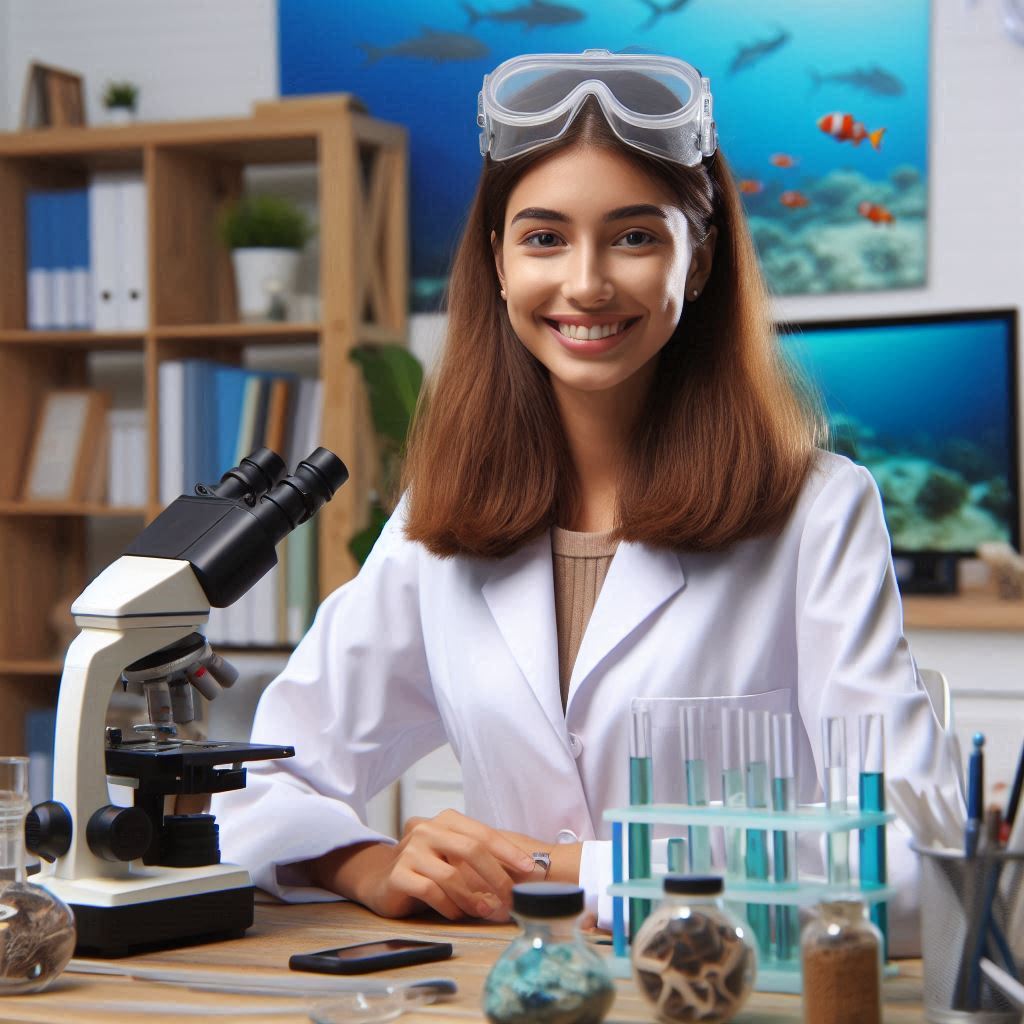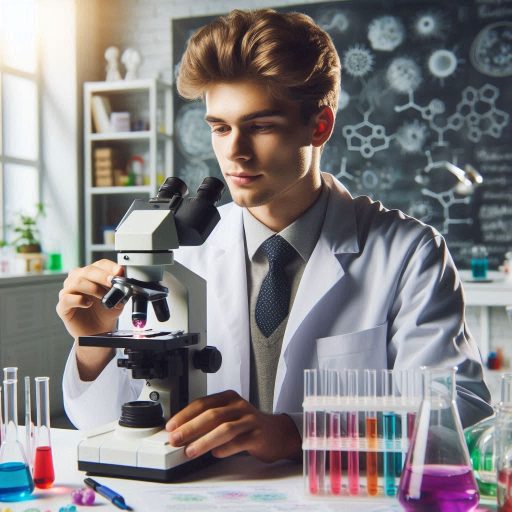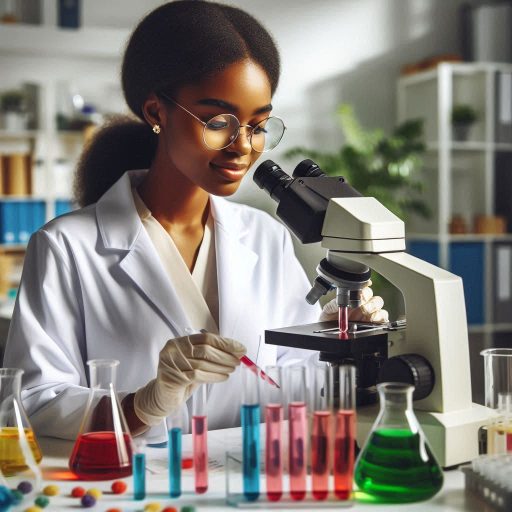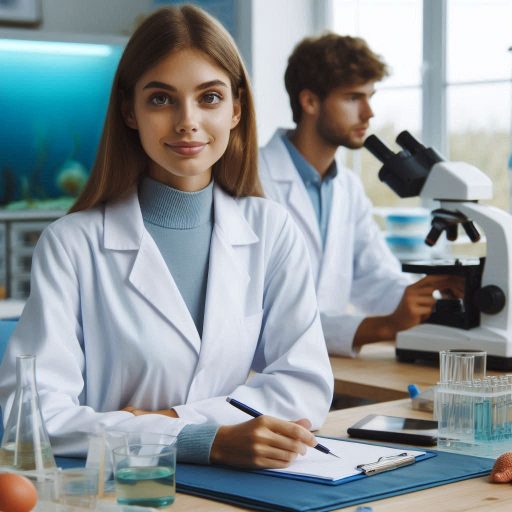Introduction
Pollution poses a significant threat to marine life and ecosystems.
Oceans absorb various pollutants, including plastics, chemicals, and heavy metals.
These contaminants disrupt habitats and harm aquatic organisms.
Studying marine life is crucial because it helps us understand these ecosystems’ health and resilience.
Healthy marine environments support biodiversity and provide essential resources, including food and medicine.
Research reveals alarming trends in marine life due to pollution.
Fish populations decline as toxic substances accumulate in their bodies.
Coral reefs, vital for marine biodiversity, suffer from bleaching caused by climate change and pollution.
Understanding these effects enables scientists to develop strategies for conservation and restoration.
This blog post will explore the various pollutants affecting marine life, including plastics and chemicals.
We will discuss the implications of these pollutants on fish and coral populations.
Additionally, we will examine current research initiatives aimed at mitigating pollution’s impact on marine ecosystems.
By highlighting these key points, we aim to underscore the urgent need for effective policies and community actions to protect our oceans.
Together, we can preserve marine life and ensure a healthier future for our planet.
Types of Pollution Affecting Marine Life
Pollution threatens marine ecosystems, harming both wildlife and their habitats.
This section explores three major types of pollution: plastic pollution, oil spills, and chemical pollution.
Each type has distinct effects on marine life, with alarming statistics highlighting the issue‘s urgency.
Plastic Pollution
Plastic pollution poses a significant threat to marine organisms.
Every year, around 8 million metric tons of plastic enter the oceans.
Sea turtles often mistake plastic bags for jellyfish, leading to choking or digestive blockages.
A study found that over 50% of sea turtles have ingested plastic debris.
Microplastics also cause harm.
These tiny plastic particles, often found in cosmetics and clothing, accumulate in marine organisms.
Fish ingest microplastics, which can then transfer to humans through the food chain.
Research indicates that about 1 in 3 fish caught for human consumption contains microplastic.
Coral reefs suffer from plastic pollution too.
Large plastic items can smother corals, blocking sunlight essential for their survival.
In the Caribbean, plastic debris has led to a significant decline in coral cover, demonstrating the far-reaching consequences of this issue.
Oil Spills
Oil spills severely disrupt marine ecosystems.
The devastating effects of oil spills can linger for years.
For instance, the Deepwater Horizon spill in 2010 released approximately 4.
9 million barrels of oil into the Gulf of Mexico.
This catastrophic event killed thousands of marine animals, including dolphins, fish, and sea turtles.
Oil coats the feathers of seabirds, reducing their insulation and buoyancy.
Many birds die from hypothermia or drowning after exposure.
Fish and marine mammals face long-term health issues from oil exposure, including reproductive problems and weakened immune systems.
Additionally, oil spills damage coastal habitats.
Mangroves, marshes, and coral reefs suffer extensive harm, disrupting their ability to support marine life.
Studies show that recovery from oil spills can take decades, highlighting the long-term impact of these incidents.
Chemical Pollution
Chemical pollution comes from various sources, including agriculture and industrial waste.
Pesticides, heavy metals, and pharmaceuticals enter oceans through runoff and waste disposal.
These toxic substances accumulate in marine organisms, leading to serious health issues.
For example, high levels of mercury have been found in fish like tuna.
Mercury exposure can cause neurological problems in both marine life and humans.
The World Health Organization estimates that 17% of fish sold globally contain unsafe mercury levels.
Coral reefs also suffer from chemical pollution.
Nutrient runoff causes algal blooms, which deplete oxygen levels and smother corals.
In Florida, harmful algal blooms have devastated local fisheries and marine habitats, demonstrating the far-reaching effects of chemical pollution.
The impact of pollution on marine life is profound and multifaceted.
Plastic pollution, oil spills, and chemical pollution all contribute to the degradation of ocean ecosystems.
Addressing these pollution types is crucial to safeguarding marine life and ensuring the health of our oceans.
With rising pollution levels, immediate action is necessary to protect marine biodiversity and habitats.
Read: Profiles in Success: Leading Chemists of the 21st Century in the US
Effects of Pollution on Marine Life
Pollution severely impacts marine life in various ways.
It causes physical harm and leads to significant behavioral changes.
These effects are evident across different marine species, from the smallest plankton to the largest whales.
Understanding these impacts is crucial for the health of our oceans.
Negative Effects of Pollution on Marine Life
Physical Harm to Marine Organisms
Marine pollution introduces harmful substances into ocean waters.
Chemicals like heavy metals and plastics pose immediate dangers.
Marine organisms often ingest these pollutants accidentally.
This ingestion can result in physical injuries, including internal damage or blockages.
For example, sea turtles often mistake plastic bags for jellyfish.
When ingested, these bags can cause severe digestive problems.
Additionally, fish exposed to contaminated waters may develop deformities.
Such physical harm reduces the survival chances of affected species.
Furthermore, pollutants can impair the reproductive systems of marine organisms.
Many chemicals disrupt endocrine functions, leading to reproductive failures.
For instance, fish exposed to certain pollutants may produce fewer offspring or develop sterility.
Behavioral Changes in Marine Life
Pollution not only causes physical harm but also affects behavior.
Contaminants can alter how marine species interact with their environment.
For example, fish exposed to high levels of pollution often exhibit erratic swimming patterns.
Such changes can hinder their ability to evade predators.
Moreover, pollutants can impact communication among marine organisms.
Many species rely on chemical signals for mating and territorial behaviors.
When these signals are disrupted, species may struggle to reproduce successfully.
Changes in behavior also affect migration patterns.
Many fish and marine mammals migrate to find food or reproduce.
Pollution can deter them from their natural routes, leading to decreased populations in some areas.
Bioaccumulation and the Food Chain
Pollutants can bioaccumulate in marine organisms.
This process occurs when an organism absorbs a substance faster than it can eliminate it.
As a result, toxins concentrate in the tissues of marine animals.
Smaller marine organisms, like plankton, absorb pollutants from their environment.
When larger animals consume these smaller creatures, they also ingest the accumulated toxins.
This bioaccumulation continues up the food chain.
Predators, such as sharks and dolphins, end up with high toxin levels.
Consequently, the entire food chain is affected by pollution.
As toxins accumulate, top predators face significant health risks.
This situation can lead to decreased reproduction rates and increased mortality.
Long-Term Consequences on Marine Ecosystems
The long-term consequences of pollution on marine ecosystems are profound.
Pollution alters habitats, making them less hospitable for marine life.
Coral reefs, for example, suffer from nutrient pollution, leading to algal blooms.
These blooms can suffocate corals and disrupt the balance of the ecosystem.
Furthermore, the decline in certain species impacts biodiversity.
As some species struggle to survive, others may thrive, leading to imbalanced ecosystems.
This loss of biodiversity can diminish the resilience of marine ecosystems, making them more vulnerable to further pollution and climate change.
Pollution inflicts serious harm on marine life.
It causes physical injuries, alters behaviors, and disrupts entire food chains.
The long-term consequences threaten the health and balance of marine ecosystems, emphasizing the urgent need for effective pollution management and prevention strategies.
Read: The Life and Times of a U.S. Physicist: A Day in Detail
Research Methods and Technologies Used in Studying Pollution Impacts
Researching the effects of pollution on marine life requires a variety of advanced tools and techniques.
Researchers use these methods to gather essential data, analyze ecosystems, and identify pollution sources.
Below, we delve into the key research methods, technologies, and their challenges.
Advanced Tools and Techniques Used to Study the Effects of Pollution on Marine Life
Researchers employ multiple techniques to assess pollution‘s impact on marine life.
Laboratory experiments allow scientists to simulate different pollution scenarios.
They can control variables and measure specific biological responses in marine organisms.
Field studies complement laboratory work by providing real-world data.
Researchers collect samples from various marine environments to analyze pollutant concentrations and their effects on local species.
Genomic and biochemical analyses are also critical in studying pollution impacts.
Scientists use these techniques to understand how pollutants affect marine organisms at the molecular level.
They examine gene expression changes, metabolic pathways, and other physiological responses.
This understanding helps researchers identify vulnerable species and ecosystems.
The Role of Satellite Imagery, Underwater Drones and Robotics and Environmental Monitoring Systems in Tracking Pollution
Satellite imagery plays a significant role in monitoring marine pollution.
Researchers use satellites to gather large-scale data on water quality and pollution distribution.
This method allows scientists to track algae blooms, oil spills, and sediment transport.
By analyzing satellite images, researchers can identify pollution hotspots and monitor changes over time.
Satellite imagery provides valuable information about temperature, salinity, and chlorophyll levels.
These parameters influence marine life and can signal pollution events.
By combining satellite data with ground-based observations, researchers gain a comprehensive view of pollution impacts on marine ecosystems.
Underwater drones are revolutionizing marine research.
These unmanned vehicles can navigate complex underwater environments, collecting data with precision.
Researchers use drones to assess pollution in hard-to-reach areas.
Equipped with sensors, drones measure water quality and gather samples for analysis.
Drones can also capture high-resolution images and videos of marine habitats.
This visual data aids in assessing the extent of pollution damage and recovery.
Researchers can monitor changes over time, enabling them to assess the effectiveness of conservation efforts.
Environmental monitoring systems provide continuous data on pollution levels.
These systems consist of a network of sensors deployed in marine environments.
They measure various parameters, such as temperature, pH, and dissolved oxygen.
By collecting real-time data, researchers can identify pollution events as they occur.
These systems enhance our understanding of how pollution affects marine life.
They enable scientists to track long-term trends and assess the cumulative impacts of pollution over time.
Challenges and Limitations
Conducting research on pollution impacts in the marine environment presents several challenges.
Accessing remote and deep-sea areas can be difficult and expensive.
Weather conditions can limit research efforts, delaying data collection.
Additionally, the complexity of marine ecosystems poses challenges in data interpretation.
Multiple factors influence marine life, making it hard to isolate pollution effects.
Researchers must account for natural variability when analyzing their data.
These challenges require innovative approaches and collaboration among scientists to advance our understanding of pollution impacts on marine life.
Effective research methods and technologies are essential for studying the effects of pollution on marine ecosystems.
Researchers must continuously adapt to overcome challenges while providing critical insights into pollution’s impacts on marine life.
Read: Salary Ranges: What to Expect as a Physicist in the USA
Transform Your Career Today
Unlock a personalized career strategy that drives real results. Get tailored advice and a roadmap designed just for you.
Start NowCase Studies on Pollution Impacts on Marine Life
Pollution significantly harms marine ecosystems worldwide.
Several well-known incidents illustrate the devastating effects of pollution on marine life.
This section highlights key examples and their implications for conservation efforts.
Examples of well-known pollution incidents that have affected marine ecosystems
The Deepwater Horizon Oil Spill
The Deepwater Horizon oil spill occurred in April 2010.
An offshore drilling rig exploded, releasing approximately 4.
9 million barrels of oil into the Gulf of Mexico.
This disaster caused immediate and long-term impacts on marine ecosystems.
Research shows that the spill affected various marine species.
For instance, studies indicated a 50% decline in the population of bottlenose dolphins in the affected area.
The spill also devastated local fish populations, leading to reduced reproductive success in species such as red snapper and grouper.
The impacts extended beyond individual species.
Researchers observed significant changes in the overall health of the Gulf’s ecosystems.
Coral reefs showed signs of stress and degradation, and harmful algal blooms increased due to nutrient loading.
The spill also affected local fishing industries, disrupting livelihoods for many communities.
The Great Pacific Garbage Patch
The Great Pacific Garbage Patch illustrates another severe pollution issue.
This area contains an estimated 1.8 trillion pieces of plastic debris.
The accumulation of plastic harms marine life through ingestion and entanglement.
Research highlights the threat plastic poses to various marine species.
Sea turtles often ingest plastic bags, mistaking them for jellyfish.
This ingestion can lead to malnutrition, internal injuries, and death.
Furthermore, seabirds frequently consume plastic, mistaking it for food.
Studies reveal that nearly 60% of seabird species have ingested plastic debris.
The implications of these findings are alarming.
Marine life struggles to adapt to a world filled with plastic waste.
Researchers emphasize the need for immediate action to reduce plastic pollution and protect marine ecosystems.
The research findings from these case studies and their implications for conservation efforts
Case studies like the Deepwater Horizon spill and the Great Pacific Garbage Patch offer crucial lessons.
They highlight the urgent need for better pollution management strategies.
Effective policies must address both the sources and impacts of pollution on marine life.
Research from these incidents informs future conservation efforts.
It emphasizes the importance of monitoring marine ecosystems and developing rapid response strategies.
Policymakers must implement stricter regulations on oil drilling and plastic production.
Engaging communities in conservation efforts is vital.
Local populations can play a significant role in monitoring marine ecosystems.
By promoting awareness and encouraging sustainable practices, we can protect marine life from pollution.
How lessons learned from past pollution events can inform future research and policy decisions.
The impact of pollution on marine life is severe and widespread.
High-profile cases demonstrate the urgent need for action.
Research findings provide valuable insights into the challenges facing marine ecosystems.
By learning from past incidents, we can inform future research and policy decisions.
A collaborative approach that involves communities, researchers, and policymakers will be essential for protecting our oceans.
Only through concerted efforts can we hope to safeguard marine life for future generations.
Read: Physics Specializations: Choosing Your Path in the U.S.

Strategies for Mitigating Pollution Impacts on Marine Life
Pollution poses a significant threat to marine ecosystems.
However, various strategies can help mitigate its impacts.
By implementing stricter regulations, promoting sustainable practices, and engaging communities, we can protect our oceans.
Here are some effective solutions:
Implementing Stricter Regulations
Governments must enforce stricter regulations to reduce pollution in marine environments.
These regulations should target industries that discharge waste into oceans.
By setting limits on harmful substances, we can significantly decrease pollution levels.
Additionally, governments should increase penalties for violations to deter companies from polluting.
Regular monitoring of water quality will help identify pollution sources.
Enhanced transparency in reporting can also engage the public in environmental protection.
Promoting Sustainable Practices
Sustainable practices are crucial for reducing pollution.
Industries can adopt eco-friendly production methods to minimize waste.
For instance, using biodegradable materials can limit plastic pollution.
Moreover, businesses can implement closed-loop systems to reduce waste generation.
Consumers play a vital role by choosing sustainable products.
Individuals should opt for reusable items over single-use plastics.
Community workshops can educate citizens about sustainable practices and encourage eco-conscious behavior.
The Role of Individuals, Communities, and Governments in Preventing Pollution and Protecting Marine Ecosystems
Individuals and communities have a significant role in preventing pollution.
Grassroots initiatives can raise awareness about marine conservation.
Local clean-up events can mobilize community members to protect nearby beaches and waterways.
These activities not only beautify the environment but also prevent litter from entering the ocean.
Schools can incorporate marine conservation into their curricula.
Educating children about the importance of healthy oceans fosters a sense of responsibility for the environment.
Governments must collaborate with organizations to develop effective pollution prevention strategies.
They can provide funding for research on pollution impacts and restoration projects.
Additionally, creating marine protected areas can help shield vulnerable ecosystems from pollution.
Effective management of these areas ensures sustainable use of marine resources.
International cooperation is essential to tackle transboundary pollution issues.
Global agreements can unite countries in their efforts to protect oceans.
Successful Conservation Initiatives
Many successful conservation initiatives have restored damaged marine habitats.
The Coral Triangle Initiative, for example, focuses on protecting marine biodiversity in Southeast Asia.
It has established marine protected areas and promoted sustainable fishing practices.
Another notable initiative is the Ocean Cleanup Project, which aims to remove plastic debris from the oceans.
These projects demonstrate that concerted efforts can lead to significant improvements in marine health.
Mitigating pollution impacts on marine life requires a collective effort.
Stricter regulations, sustainable practices, and active community involvement play crucial roles.
Successful conservation initiatives illustrate the positive outcomes of dedicated efforts.
By working together, individuals, communities, and governments can protect our oceans for future generations.
The health of our marine ecosystems depends on our actions today.
Let‘s commit to preserving these vital resources and ensuring a sustainable future for marine life.
Learn More: Guide to Writing Effective Data Science Reports
Collaborative Efforts in Marine Pollution Research
Collaboration among scientists, policymakers, and stakeholders plays a vital role in addressing pollution impacts on marine life.
Marine pollution affects ecosystems, biodiversity, and human health.
Thus, collective action becomes essential for effective solutions.
By working together, diverse expertise can converge to tackle complex challenges associated with marine pollution.
Importance of Collaboration
Collaboration enhances the effectiveness of research and conservation efforts.
Scientists bring technical knowledge and methodologies, while policymakers provide regulatory frameworks.
Stakeholders, including local communities and businesses, contribute unique insights and needs.
This multi-faceted approach ensures that solutions are comprehensive and tailored to specific contexts.
For instance, effective communication between these groups fosters a better understanding of pollution sources and impacts.
When researchers share findings with policymakers, it leads to informed decision-making.
Similarly, engaging stakeholders ensures that local perspectives shape conservation strategies.
This synergy creates a more robust foundation for tackling marine pollution.
International Research Projects
Numerous international research projects showcase the power of collaboration in studying marine pollution.
The Global Partnership on Marine Litter is one notable initiative.
It involves various countries and organizations working together to address marine litter’s effects.
This partnership promotes knowledge sharing, enabling researchers to identify trends and sources of marine debris.
Another example is the Ocean Cleanup Project, which aims to remove plastic from oceans.
This initiative unites engineers, scientists, and environmental advocates.
Together, they develop innovative technologies to tackle plastic pollution in marine environments.
Such collaborative efforts highlight the potential of global partnerships in addressing marine pollution effectively.
Benefits of Sharing Data and Knowledge
Sharing data and knowledge is crucial for informing global conservation efforts.
Open access to research findings accelerates progress in understanding pollution impacts.
It enables scientists to identify patterns and correlations in pollution data.
For example, by sharing data on chemical pollutants, researchers can track their effects on marine organisms.
This information is vital for developing mitigation strategies.
Collaboration also encourages the standardization of research methodologies.
When researchers adopt consistent methods, it facilitates comparative studies.
Policymakers can then base regulations on comprehensive, reliable data.
Such informed policies have a more significant impact on marine conservation.
Moreover, collaboration fosters innovation.
By sharing diverse perspectives, researchers can develop new solutions to complex problems.
For instance, joint workshops and conferences encourage the exchange of ideas and best practices.
This collaborative spirit can lead to groundbreaking advancements in pollution mitigation techniques.
Collaborative efforts are essential in marine pollution research.
The intersection of expertise among scientists, policymakers, and stakeholders creates a powerful force against pollution impacts.
International projects exemplify the effectiveness of partnerships in addressing marine pollution.
By sharing data and knowledge, we can inform global conservation efforts and drive meaningful change.
Collective action is our best chance to protect marine life and ensure a sustainable future for our oceans.
You Might Also Like: Virologist Work Environment: Labs, Fieldwork, and More
Transform Your Career Today
Unlock a personalized career strategy that drives real results. Get tailored advice and a roadmap designed just for you.
Start NowConclusion
Pollution significantly threatens marine life and ecosystems.
Toxic substances like plastics and chemicals disrupt habitats and harm various species.
Microplastics infiltrate the food chain, impacting not only marine animals but also human health.
Research has uncovered alarming trends, showing declining populations of fish, corals, and other marine organisms.
Scientists urge the public to recognize the urgency of this crisis.
Continued research is essential to understand pollution’s full impact and to develop effective solutions.
Collaborative efforts among governments, researchers, and communities can mitigate these threats.
We must support initiatives that aim to reduce pollution and protect our oceans.
Participate in local clean-up events or advocate for stricter environmental regulations.
Every action counts, no matter how small.
Together, we can preserve marine ecosystems for future generations.
Educating ourselves and others about the effects of pollution is crucial.
Raising awareness encourages more people to join the fight against pollution.
Let‘s work together to safeguard our oceans and marine life.
Our collective efforts can lead to healthier, thriving oceans, ensuring the survival of countless species.
Your involvement can make a difference today.
[E-Books for Sale]
The Big Book of 500 High-Paying Jobs in America: Unlock Your Earning Potential
$19.99 • 500 High-Paying Jobs • 330 pages
Explore 500 high-paying jobs in America and learn how to boost your career, earn more, and achieve success!
See All 500 High-Paying Jobs of this E-Book
1001 Professions Without a Degree: High-Paying American Jobs You Can Start Now
$19.99 • 1001 Professions Without a Degree • 174 pages
Discover 1001 high-paying jobs without a degree! Unlock career tips, skills, and success strategies for just $19.99!




